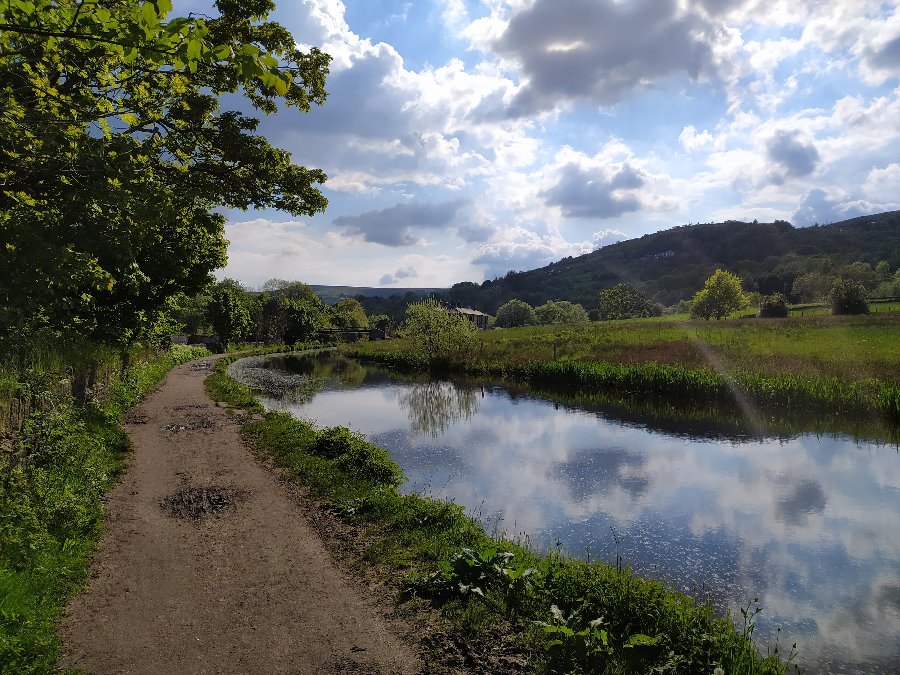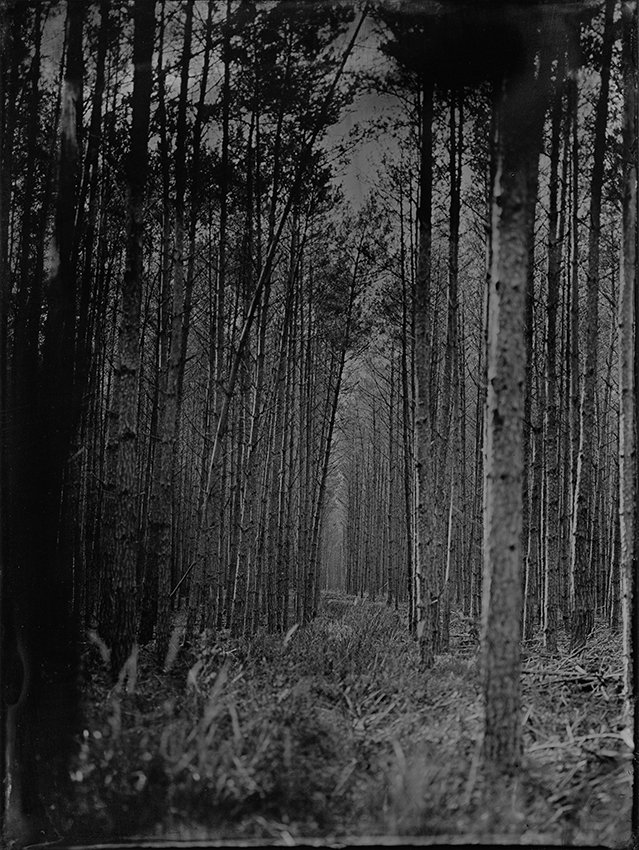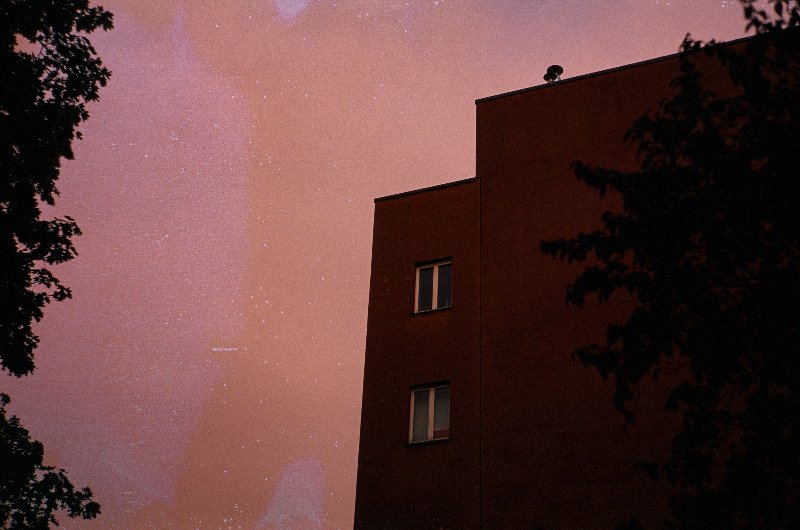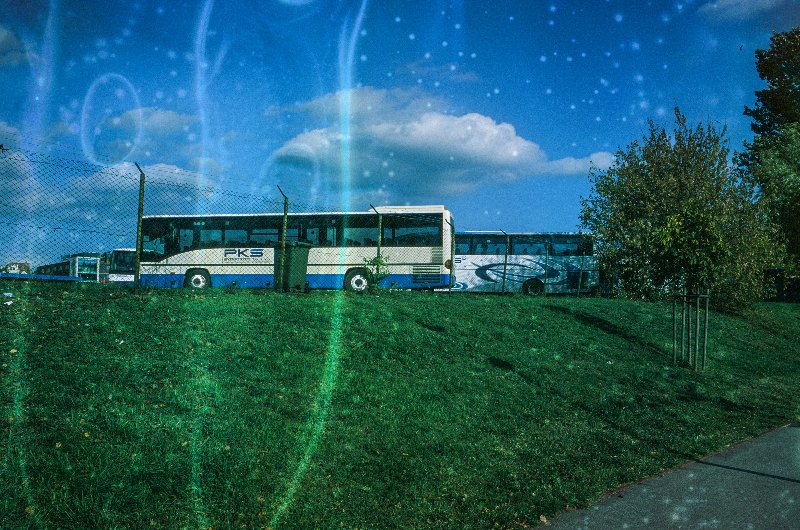Canal walk, reflections
/By Anna Evans:
The canal is a great mirror. The stillness of the water reflecting the landscape, with barely a ripple or movement. The trees and the hills are echoed in the water. The clouds are a floating canopy, creating another dimension, a sense of the infinite, a continuous merging of land and sky.
It is an idyllic day in early summer as we embark on a walk along the Huddersfield Narrow Canal. The sky is a carefree blue, the clouds dance through it. Along the towpath, dappled light and shade falling from the trees, stretching onwards and ahead in measured distances, marked for walking. Looking back towards Marsden village, to the backdrop of the moors, wanting to absorb, not to miss a single view. The houses and hillsides framed serenely, with wildflowers and thickets, patches of heather on the moors. The colour of the stone always feels like coming home.
The telegraph wires suspended across the sky in lines. Ferns overhang the water, their elegant fronds distinctive, along with the branches, the dark shadows of trees. A tree spills its branches across the surface of the water, its reflection blurring impressionistically, ending there in the clarity of white clouds. The textures of the landscape layered in brushstrokes, like stepping through a painting. A picture framed in a pool of water below, dark hills above, a scattering of leaves and of light, propelled in a drift, into layers of colours. The pretty tree admires its image in the water.
A few narrowboats are moored, their coloured reflections surrounded by the trees; gypsy caravans on the water, landlocked but ready to move again. Here there are meadows and flowering trees, the scenic pause of a lock, painted black and white. A beautifully restored stone bridge, a cobbled lane leading away. I like these crossings, these intersections preserved in time. Each lock is numbered, and each bridge across. The sunken towpath passes underneath. It is damp under there and we bend our heads and lean towards the water.
The canal opens out wide, almost circular, before narrowing again into a lock entrance, towards which the water funnels. In this basin, the water reflects the clouds, the trees, the gates of the lock. The water level plunges so that it is like peering down into the depths of a dark well walled by stone. It is almost a surprise to see the water flowing, its force and light and movement. These locks of wood and iron turning cogs, using the measured weight of the water, to propel, to lift, to move.
The path bends under trees, casting their shadows, leaning across and straying into the territory of the canal, as if swaying, bending, walking towards the water. The water has another quality to it, dark ripples shroud the reflections of the trees in mystery. They trail their leaves and branches through the mirror pool mingling with what is unsettled in the water, with a certain unexplained murkiness fragmented and immersed, stilled and agitated.
Like much of the canal this stretch is wooded and the walls are mossy. A stream runs alongside. There are fallen leaves and hidden paths, the ground saturated by the recent rainfall. The trees bend gently obscuring the light and making it feel damper, the kind of mud that never dries out fully, dark with disintegrating leaves. Reeds and rushes grow thickly, and reflections of the trees make it almost impossible to see what’s below the surface.
The water is densely covered to saturation with flying particles, seeds dispersed by the wind, blown across in sparkles of light and dark; a silver coated pathway travels onwards. A bright patch of light leading out into the dark canal, like a forest shaded in dark patterns of trees and light. The clouds darken again, shift their shapes in silhouetted, weighted light, outlined by the bright lines of sunlight emerging, changing the view.
We emerge into the outskirts of Slaithwaite, a thriving Pennine village where people sit outside in cafés and bars near the waterside. The canal is a snapshot, like the cobbled streets and preserved architecture, a remnant of another time. Everywhere there are adaptations, an old mill building converted into modern apartments. Passing through the village, the towpath continues. The day has shifted and become more changeable as we cross into a part of the canal with a more industrial feel. The parts I remember most, that are indented on my memory.
*
It is a walk I have been wanting to take for some time, to connect with my memories, with the impressions I carried with me. The canals were stilled space where once there was movement. A turbulent history mapped across the hillsides. A landscape reined in and tamed, saddened by overwork; lying forlorn and forgotten, waiting for a time when it might heal its scars. The spinning mills that were emptied and slowly given new life. Standing at the canal’s edge they overhang and overshadow; large windows in rows, reflecting the light.
I always wondered at the empty buildings left there, abandoned, derelict. The windows covered over, places of loss, places to avoid. I grew up around these buildings with their patched over windows and doorways. They followed me like shadows. Across these valleys they were everywhere. Desolate ruins blocking out the light and casting a reminder. When I close my eyes, what I picture are the shells of dark stone lying forlorn and forgotten, empty buildings and broken windows reflected in the dank still water. The shadow always remaining, the ghosts of what has gone before.
The canal was always there in my memory. Sometimes a lonely desolate place, sometimes the sunny light feeling of walking along by the water. You could walk for miles of changing landscape, along its edges and lost waterways, crossing countryside and the hidden parts of the town. From the windows of a train travelling across the valley to Manchester. From the window of my school bus, as it wound its way through the outskirts of the town. Where the chimneys remain, when the clouds hang across the Colne Valley, the canal looks back at me.
*
The day has shifted, and the quietness is palpable. Each corner, each bend, each stretch of the canal seems to bring a new feeling, a difference to the walk. The canal becomes narrower here and the trees start to feel like they’re concealing something. There are high walls, moss-covered, ferns grow along the banks, and the trees bend closer over the water looking down on their reflections. I turn my camera towards the water and the sky lengthens out into a narrow passage of light, pulling towards the edges of the frame, a tunnel of soft, white light.
The water feels closer, it is eerily quiet in some places. A sense of neglect, broken windows, barbed wire, and corrugated iron. The bank of clouds darker, overhanging. An abandoned building by the water’s edge, the dark symmetry of the windows reflected, slightly distorted by the water, deep and unbending, unmoving. The texture mimics a solidity the water cannot have, so that I start to wonder what it is about that part of the water that sets it apart?
The trees start to ascend the side of the building, its solid walls refuse to yield. Inside, its empty frame, the windows bricked over to conceal what lies discarded within. Through a web of tree branches, another empty structure, broken windows, semi-hidden. The trees beginning to cover the frame in shadow. Its empty soul lies reflected in the water.
The canal feels like an intruder into the landscape, that many years later is starting to be claimed back. Over time to reflect and to blend with its surroundings, its edges to soften and become less clear cut, less distinct or separate. Blurring its lines, the hard edges cut from the land are overrun with ferns, with dandelions and grasses. Where the seeds, the falling leaves, and trailing branches corrupt the surface of the water.
Yet I think it always resisted, always retained its other quality. The one that is given away by that tendency of the water: to stand still, to resist the inevitable movement of wind and currents. There is something vacant and still, another quality to this water, as if it had a presence. In some places it looks like another surface, no longer water, lying still and undisturbed.
We are approaching the outskirts of the town and the towpath seems endless. There is something concealed and desolate about these parts of the canal that intrigued me, that I remember. I am trying to work out where we are, where we will emerge when we leave the canal. The water churned and disconsolate from this angle. Empty buildings reflected in the water. Dark bridges and hidden pathways. In the windows, reflections of other ruins.
***
Anna Evans is a writer from West Yorkshire, currently based in Cambridge. She writes about place and memory, travel and migration, and is working on a non-fiction project on the author Jean Rhys and the spaces in her fiction. You can follow her progress through her blogThe Street Walks In.


















































